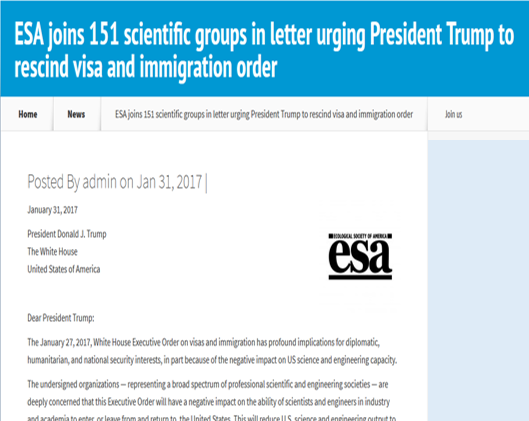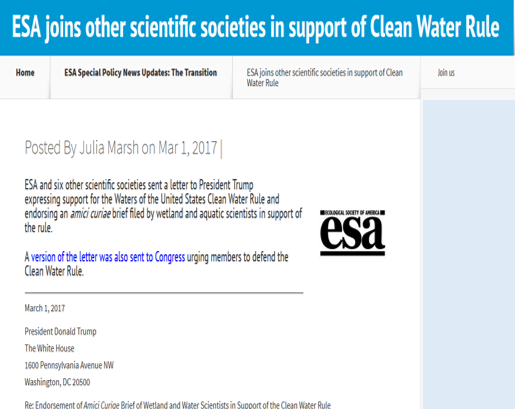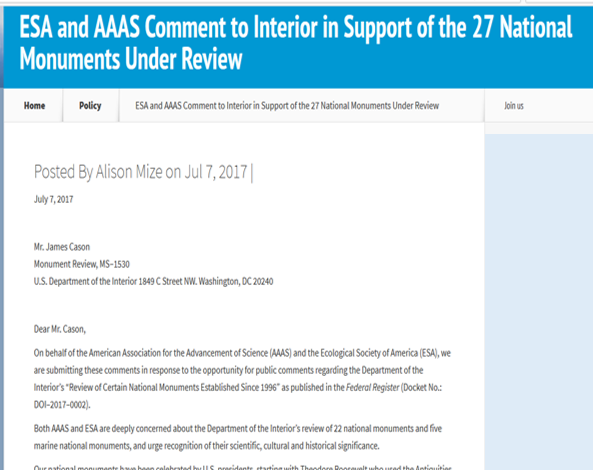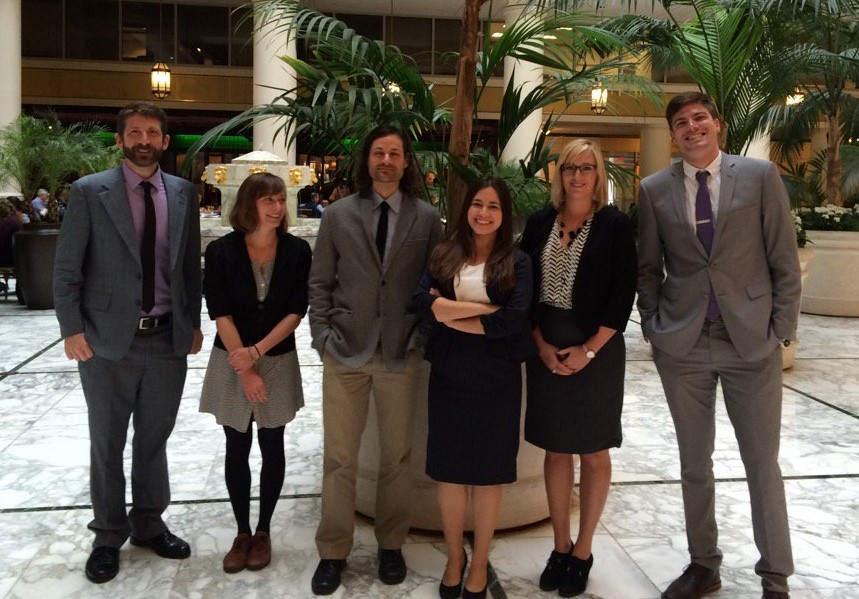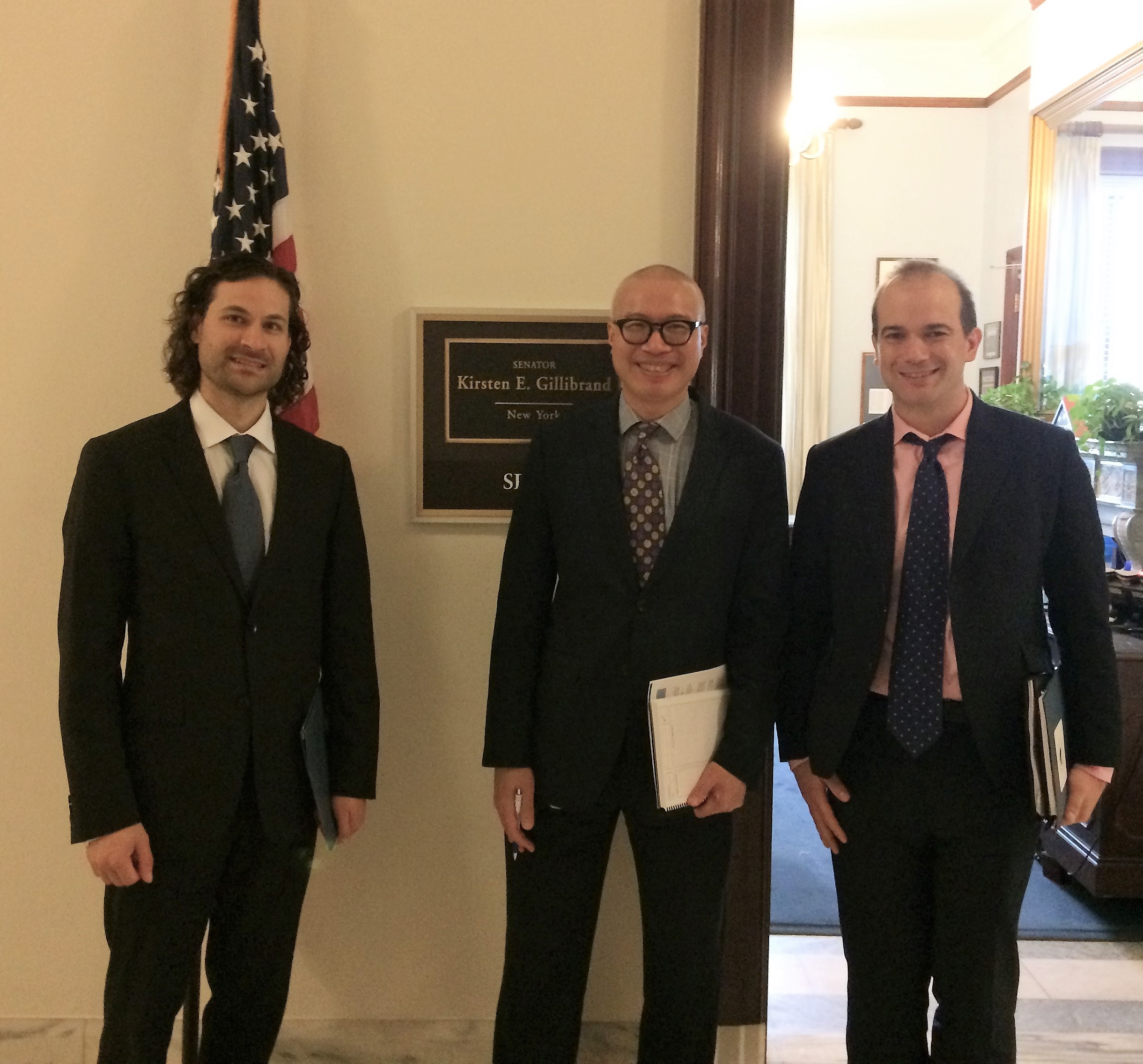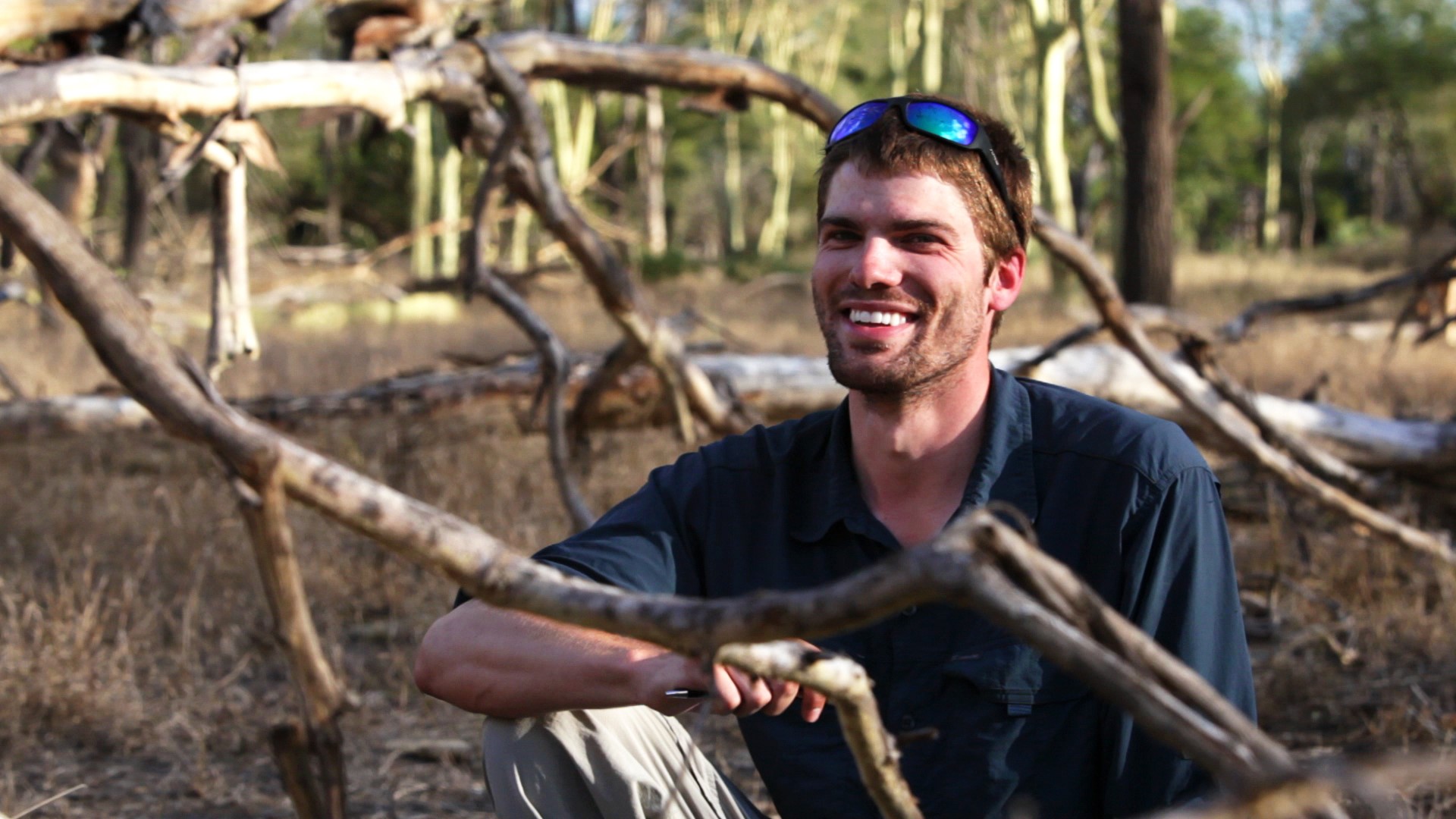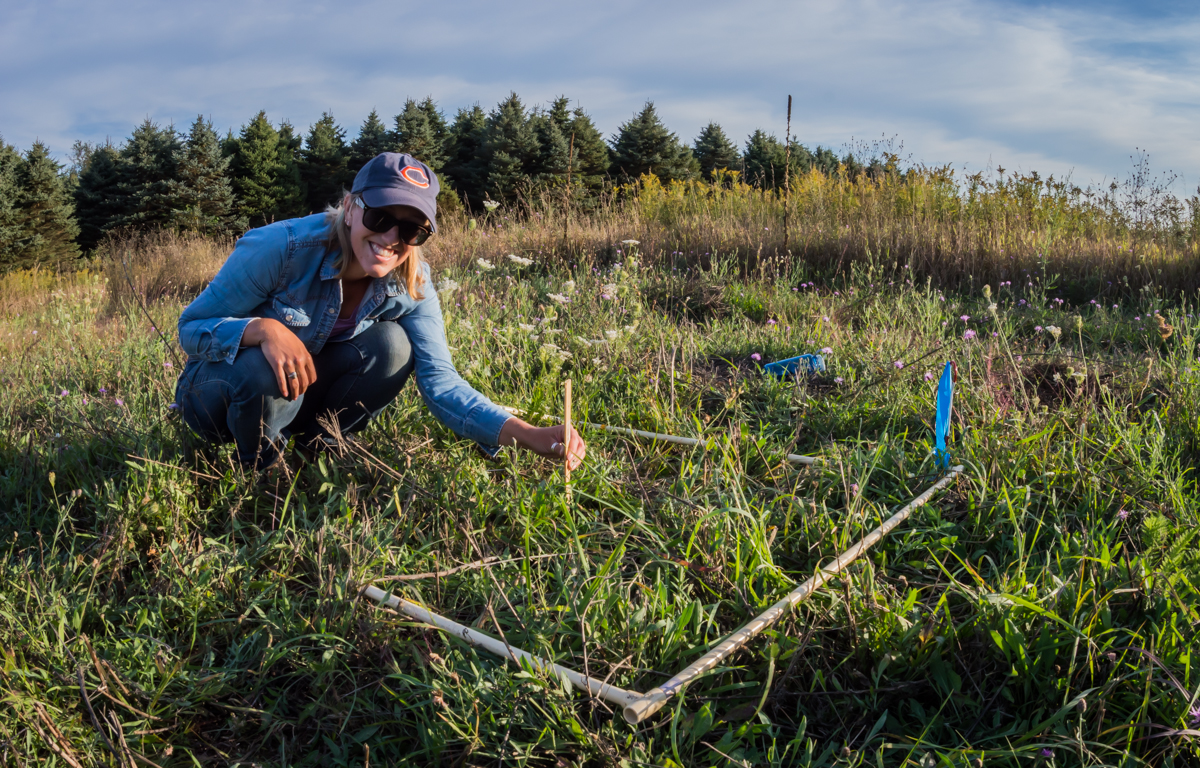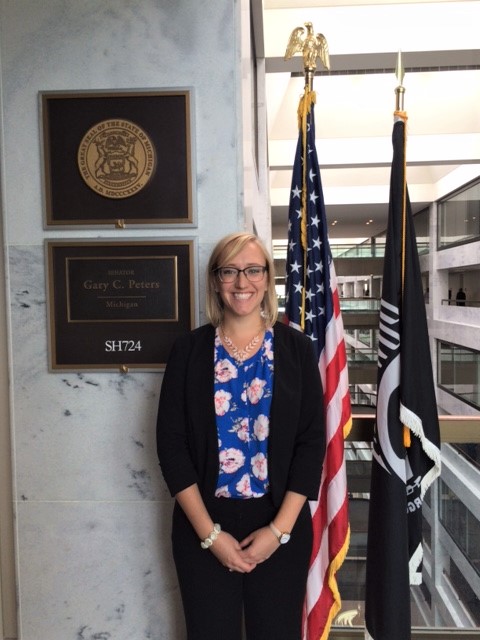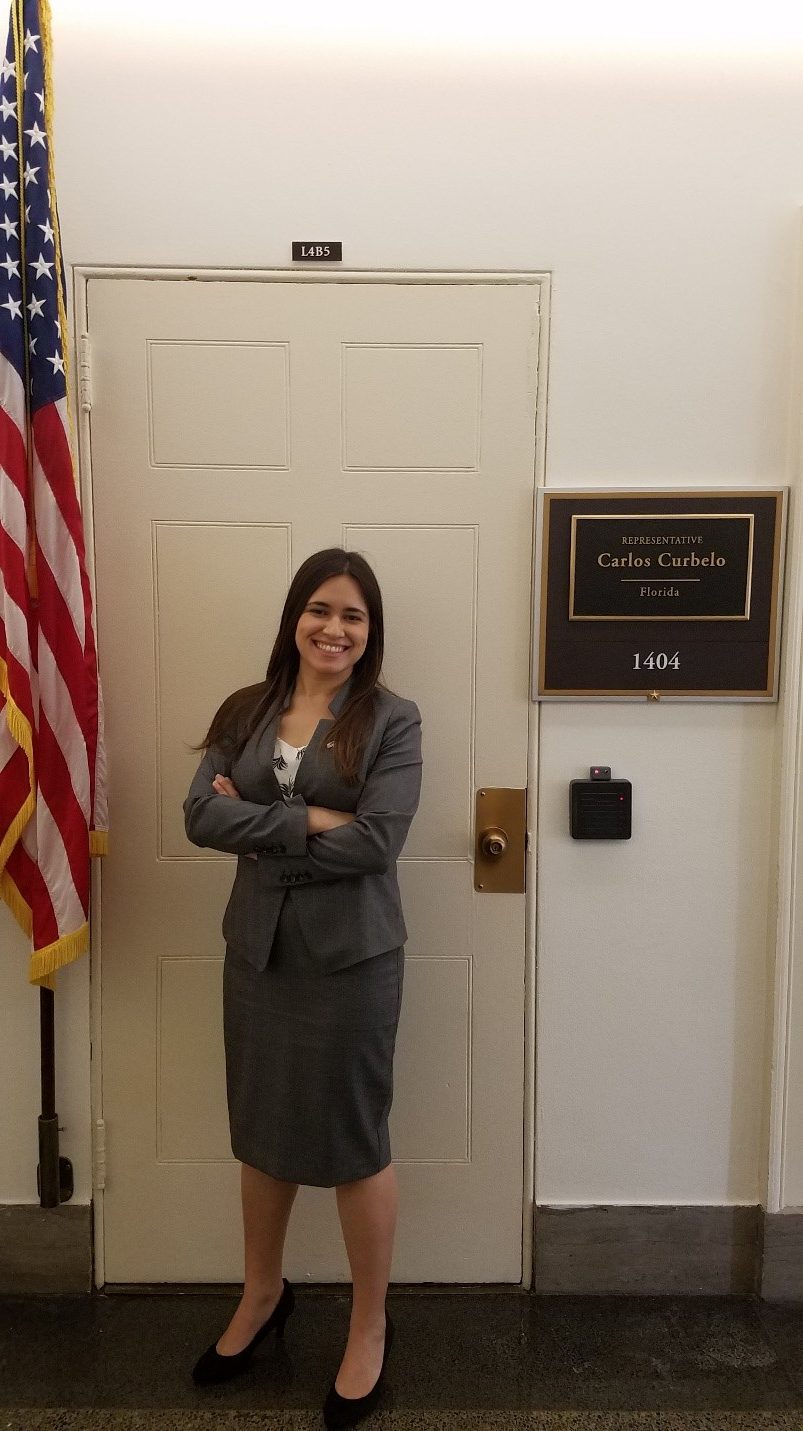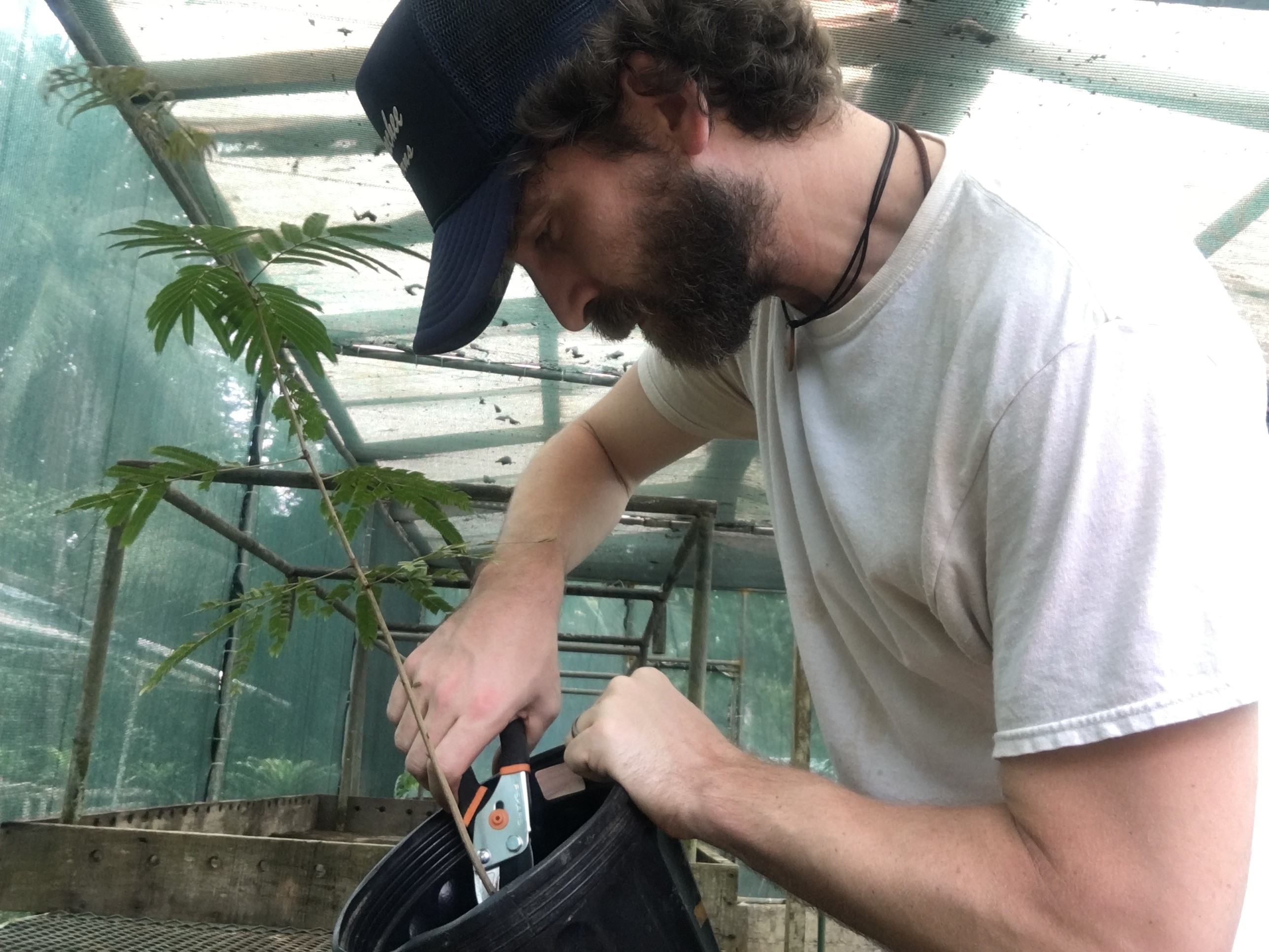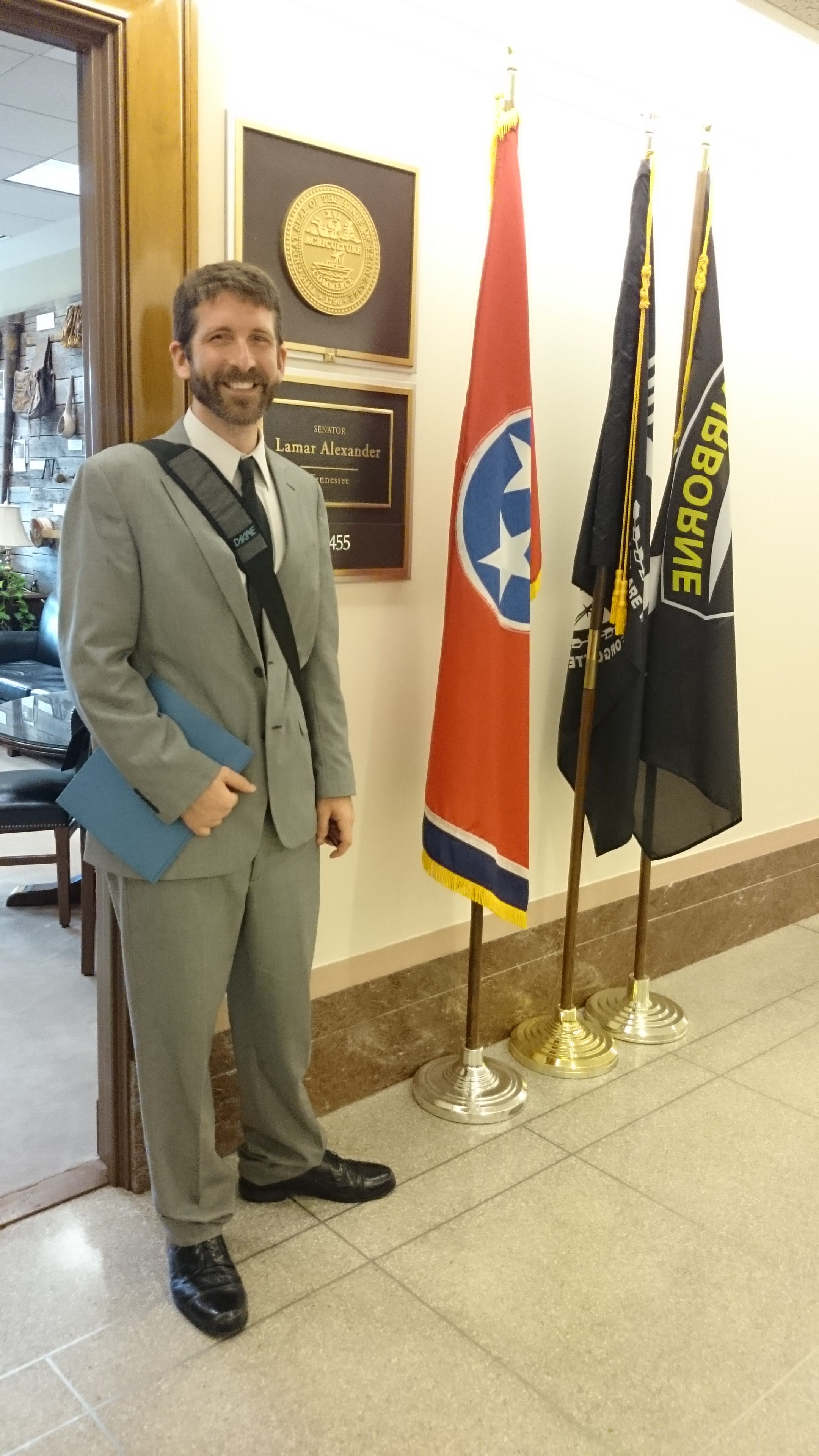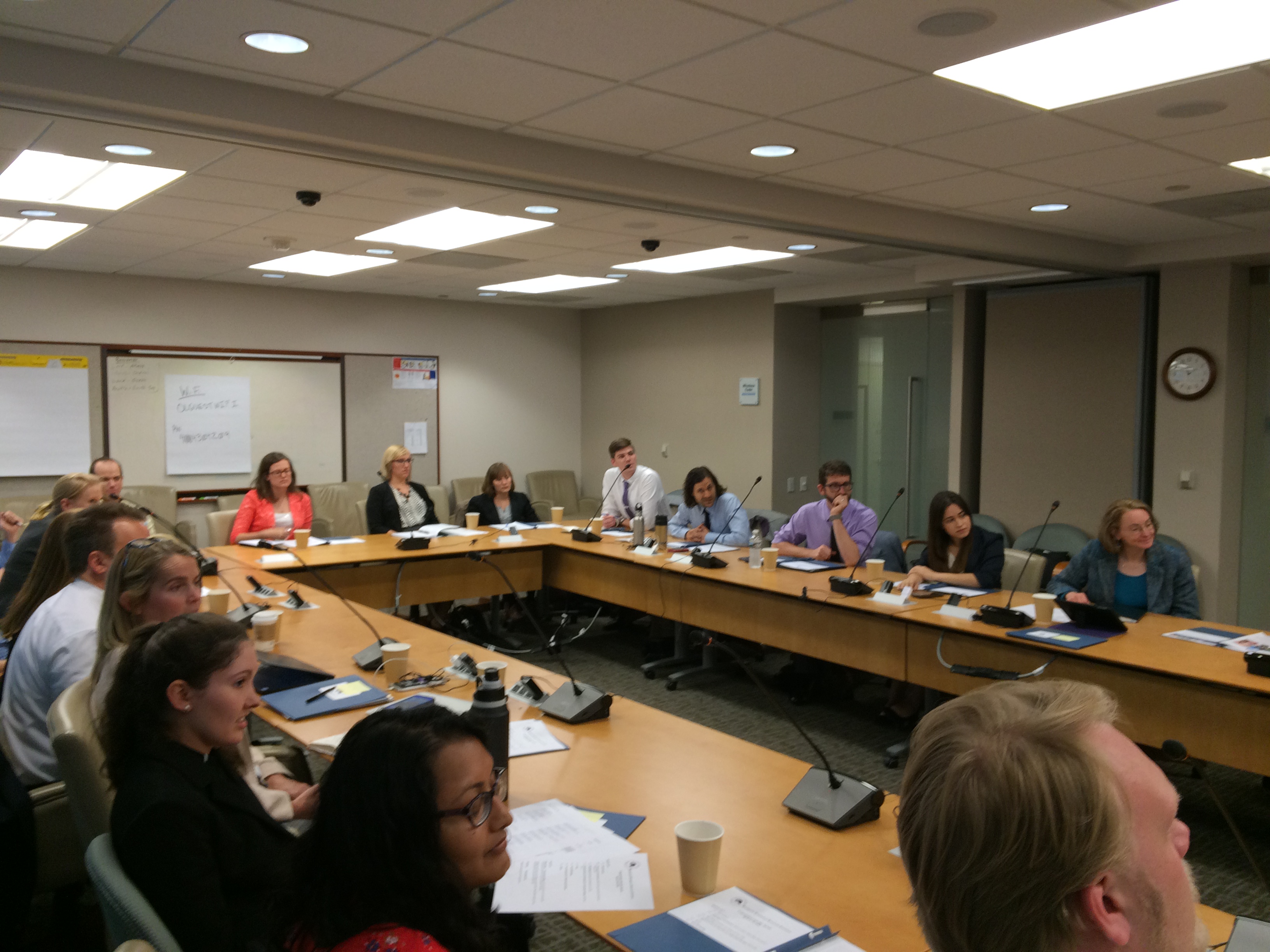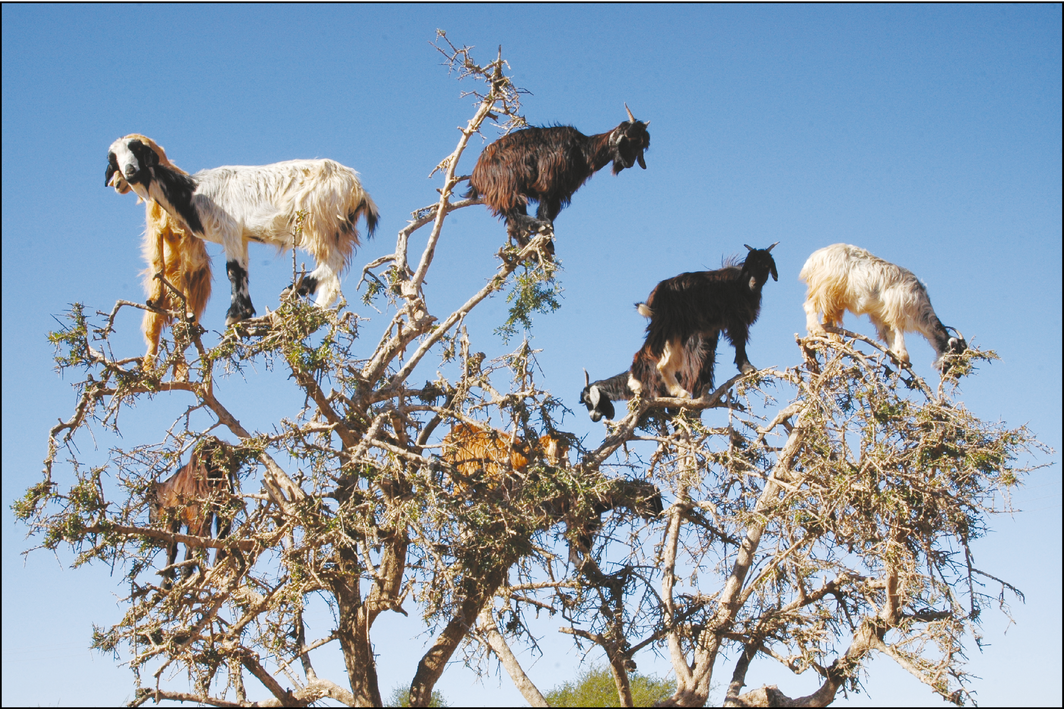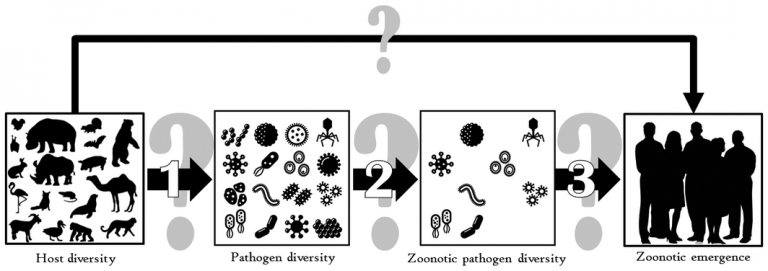Public Affairs Program: Science for Policy and Policy for Science
ESA’s Public Affairs Office manages the Society’s public policy and media initiatives. Working closely with its elected leadership, we facilitate opportunities for members to engage beyond the scientific community through media contacts, press releases, social media, briefings, and one-on-one meetings with policymakers. 2017 proved to be a pivotal year for ecologists that moved most into engaging in policy at levels unseen in previous years. ESA Past-president Jane Lubchenco’s penned a commentary on “Environmental science in a post-truth world,” in Frontiers in Ecology and the Environment that resonated with members. ESA leadership and staff quickly addressed some of the administration’s policy actions, especially in concert with other scientific societies. For example, ESA’s letter on scientific integrity and joint letters on the immigration ban, the importance of a president’s science advisor appointment, are a few. Communications to members from ESA President Lodge regarding the new administration and Policy News served to keep members up-to-date during a tumultuous period.
“Although the US election promises great changes, the laws of nature will remain unchanged. These include the dependence of human welfare on clean water, clean air, well managed fish populations, abundant bees to pollinate our crops, and healthy ecosystems that provide the many other services that allow people to live happy and productive lives. The Ecological Society of America will remain a source of discovery, knowledge and analysis to understand and manage biodiversity and ecosystems. As the largest society of professional ecologists in the world, ESA manifests the importance of innovative scientific research, and stands ready to share our knowledge with a new US president and Congress. This has been the case since its founding in 1915, and will be ever more important in a world which demands more and more from nature.” ESA President David Lodge, November 2016
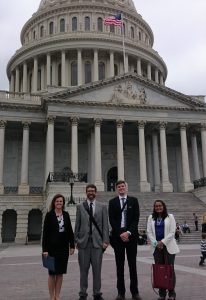
Graduate Student Policy Award winners Ben Taylor (second from left) and Tyler Coverdale (second from right) with their BESC teammates in front of the Capitol during Congressional Visits Day.
Speaking Up for Science
ESA works to infuse ecological knowledge into national policy decisions, engaging in science policy efforts to inform policy affecting the ecological community and foster support for research and STEM education. ESA joins with other scientific associations to amplify its messages for policymakers through membership in coalitions, including the Climate Science Working Group, Coalition for National Science Funding, USGS Coalition, NDD United, and National Environmental Coalition on Invasive Species. This past year, ESA joined additional coalitions in order to maximize its reach, including the Energy Sciences Coalition and Agriculture and Food Research Initiative (AFRI) Coalition.
March for Science
The Society joined over 28 organizations and scientific societies in supporting the mission of the March to publicly communicate science as a pillar of human freedom and prosperity. The March for Science was held in Washington, D.C. Before the event, Public Affairs staff prepared an on-demand webinar entitled “Communicating with Congress” and posted a free PDF of the “Ecologists Guide to Policy” as resources for ESA members.
Policy Letters and Statements
ESA issued or co-signed over fifty letters or statements to policy makers last year. Topics covered include addressing executive orders affecting student immigration visas, federal funding for scientific research, environmental regulation, scientific integrity, and other issues such as the administration’s decision to withdraw the U.S. from the Paris Climate Accord. Several policy statements garnered press as news outlets looked towards scientific societies to contextualize new policies.
Keeping Members Informed
To keep members up-to-date on the latest policy developments, we created multiple tools that can be found on the Ecotone blog: a cabinet-level Federal Agency Transition Tracker; a Federal Budget Tracker; a Special Policy News: the Transition series and comprehensive twice-monthly Policy News editions sent to all members.
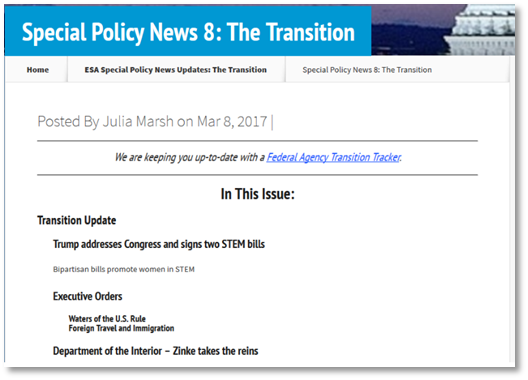
ESA issued a a special policy news series, “The Transition,” to keep members up-to-speed about the first 100 days of the new administration. A sea change of policy positions released at a break neck speed kept scientists reeling.
As with any new administration, political appointees head and lead most cabinet-level federal agencies. Nominees are confirmed by the Senate. The ESA Federal Agency Transition Tracker monitors the status of leadership positions of interest to ecologists.
The new administration submitted a draconian federal budget in March, called “The Skinny Budget” that would have decimated funding for scientific research. Congress largely rejected the presidential budget request. ESA developed a Federal Budget Tracker for FY 2018 for members to easily view the status of the federal budget.
Providing Opportunities for ESA Members to Engage in Policy
Graduate Student Policy Award
ESA brought six Graduate Student Policy Award (GSPA) winners to Washington, DC in April. This annual award provides graduate students in ecology with the opportunity to learn about policy and federal science funding and gain experience engaging in policy and communicating their science. Six recipients were selected for this year’s award: Jason M. Aloisio (Fordham University), Tyler C. Coverdale (Princeton University), Anna M. Groves (Michigan State University), Christine J. Pardo (University of Miami), Jessica M. Rudnick (University of California, Davis), and Benton N. Taylor (Columbia University).
The GSPA winners, along with more than 30 other scientists, participated in a Congressional Visits Day co-organized by ESA and sponsored by the Biological and Ecological Sciences Coalition (BESC), which is co-chaired by ESA and the American Institute of Biological Sciences. This event offered the students the opportunity to meet with policymakers on Capitol Hill to discuss the importance of federal funding for the biological and ecological sciences. The BESC participants met with a combined total of over 80 congressional offices to support $8 billion for the National Science Foundation (NSF) in Fiscal Year 2018. They highlighted how federal investment in scientific research, specifically related to NSF’s biological sciences directorate, benefits the constituents the lawmakers represent.
2017 Graduate Student Policy Award Cohort
Coalition for National Science Funding Capitol Hill Exhibition
 ESA joined 34 other organizations to participate in the 23rd Annual Exhibition and Reception of the Coalition for National Science Funding (NSF) on Capitol Hill, entitled “Investments in STEM Research and Education: Fueling American Innovation.” This event, held on May 16, showcased research made possible by the National Science Foundation. Christopher Swan (University of Maryland, Baltimore County) represented ESA, presenting his research on biodiversity in river networks. NSF Director France Cordova stopped at each exhibit and spoke with those presenting.
ESA joined 34 other organizations to participate in the 23rd Annual Exhibition and Reception of the Coalition for National Science Funding (NSF) on Capitol Hill, entitled “Investments in STEM Research and Education: Fueling American Innovation.” This event, held on May 16, showcased research made possible by the National Science Foundation. Christopher Swan (University of Maryland, Baltimore County) represented ESA, presenting his research on biodiversity in river networks. NSF Director France Cordova stopped at each exhibit and spoke with those presenting.
Climate Science Hill Day
ESA members participated in Climate Science Day (CSD) for the third time in 2017. This annual education and outreach event is sponsored by the Climate Science Working Group (CSWG), of which ESA is a member along with other scientific associations. The goal is to advance understanding of climate science research with policymakers on Capitol Hill. On March 21, twelve CSD teams of scientists from various societies conducted over 80 meetings with House and Senate offices and congressional committee staff. Meetings with freshman Senate and House members were prioritized along with lawmakers who serve on committees with jurisdiction over climate science. ESA member Jeffrey Dukes of Purdue University participated.

Bob Inglis, former Congressman (R-SC), and executive director of republicEn shared his experience with scientists on how to communicate shared values with lawmakers about our changing climate before they met with Members of Congress. Jeff Dukes (pictured right) spoke with him during a break.
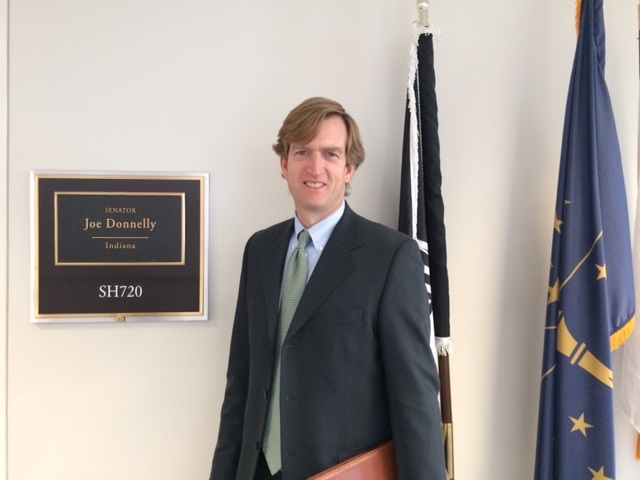
ESA member Jeff Dukes met with Senator Joe Donnelly (D-IN) to discuss how ecosystems respond to climate and atmospheric change. Dukes is Director of Purdue Climate Change Research Center and Professor of Forestry & Natural Resources & Biological Sciences.
Training for Effective Science Communication
In November 2017, the Public Affairs Office held the Society’s first-ever Communicating Science Workshop at Bowie State University. This workshop, funded by an award provided by Wiley Publications and distributed by the ESA Governing Board, provided ESA members with the basics of science communication and public engagement. Attendees learned about effective science communication in a variety of settings and developed skills for engaging with the media, Congress, and other audiences. More workshops for members are planned for next year.
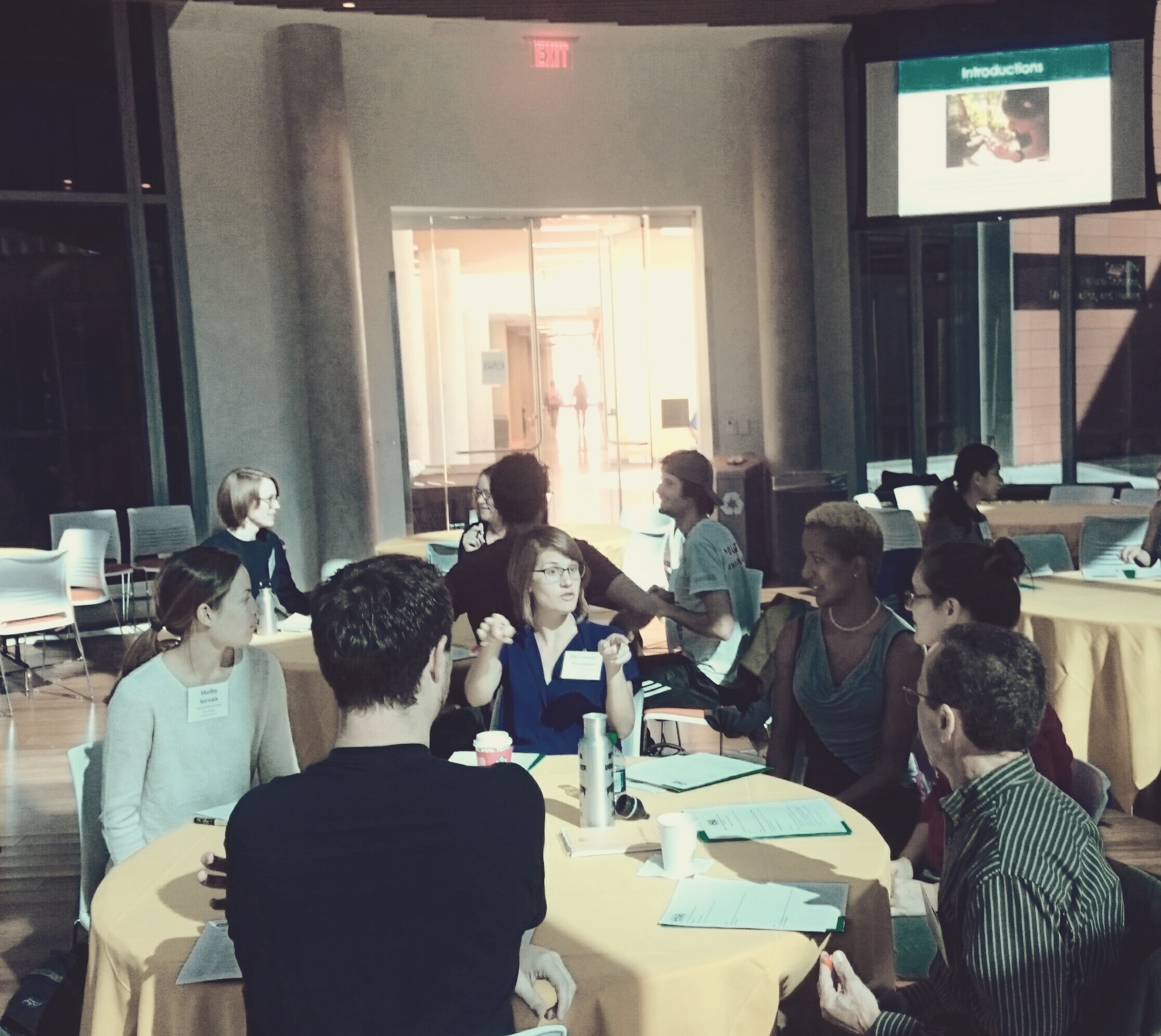

Rich Pouyat, ESA president 2017-2018, urged members to engage in policy.

Melissa Kenney, ESA Public Affairs Committee member, presented on Public Engagement. Steve Sheffield, Mid-Atlantic Section officer, hosted the group in Bowie State’s platinum LEED building providing a great space for networking opportunities.
Press Releases
Selected press releases from ESA. Find all press releases in our Press Release page. ESA’s press office assisted authors’ institutions with over 60 press releases in the 2016-17 annual reporting year. Browse news stories featuring ESA programs, publications, policy initiatives, meetings, and awards on our ESA-in-the-News page.

Puff and lounge thermoregulation. American pikas can their moderate body temperature through posture (to some degree), squeezing into a fluffy ball, a body posture with minimum surface area, to hold in heat in winter (left), or stretching out the surface area of their bodies to cool down in summer (right). In recent years, pikas have been observed modifying their foraging habits in ways that may be behavioral adaptations to a changing climate. Credit, J. Jacobson, from figure 4 of EA Beever et al (2017) Front Ecol Environ doi: 10.1002/fee.1502.
“Will only the flexible survive? Researchers are identifying the West’s wildlife that can best cope with climate change.” by Maya Kapoor High Country News 22 Aug 2017 “Fuzzy Pikas Adapt to Climate Change at Different Rates” by Adam Aton ClimateWire (republished in Scientific American) 3 Aug 2017 “Pikas are disappearing from California’s Sierra Nevada mountains” by Carl Engleking Discover Magazine D-brief 30 Aug 2017
Adorable alpine animal acclimates behavior to a changing climate
2017 Annual Meeting of the Ecological Society of America: Linking biodiversity, material cycling and ecosystem services in a changing world 6–11 August 2017 FOR IMMEDIATE RELEASE: Tuesday, 1 August 2017 Contact: Liza Lester, 202-833-8773 ext. 211, LLester@esa.org As climate change brings new pressures to bear on wildlife, species must “move, adapt, acclimate, or die.” Erik Beever and colleagues review the literature on acclimation through behavioral flexibility, identifying patterns in examples from invertebrates, amphibians, reptiles, birds, mammals, and fishes, in the cover article for the August issue of the Ecological Society of America’s (ESA) journal Frontiers in Ecology and the Environment. The authors focus on the American pika (Ochotona princeps) as a case study in behavioral adaptation. Beever will explore factors that define the pika’s distribution on Tuesday, August 8 at the ESA’s 2017 Annual Meeting, held this year in Portland, Oregon. -> read the press release
“The American pika: A case study in wildlife acclimating to climate change” by Mike Gaworecki Mongabay 10 Aug 2017
Tree-climbing goats disperse seeds by spitting
The amazing tree-climbing goats that help farmers disperse seeds by spitting them on the ground Phoebe Weston Daily Mail 25 May 2017 Ptooey! Tree-Climbing Goats Spread Seeds by Spitting Stephanie Pappas Live Science 25 May 2017 Tree-climbing, seed-spitting goats aid farming in Morocco Yahoo News (Reprint Sky News) 30 May 2017 Au Maroc, les chèvres perchées dispersent les graines des arbres en les crachant Anne-Sophie Tassart Sciences et Avenir 31 May 2017
Goats graze on an argan tree in southwestern Morocco. In the fruiting season, many clean argan nuts are spat out by the goats while chewing their cud. Credit: H Garrido/EBD-CSIC
Do Tree-Climbing Goats Help Plant New Trees? Marc Silver NPR 31 May 2017 Tree-climbing goats spit out and disperse valuable argan seeds Elizabeth Preston New Scientist 25 May 2017 These tree-climbing goats spread seeds by spitting Mary Beth Griggs Popular Science 25 May 2017 Tree-Climbing Goats Scatter Seeds By Spitting Forbes 26 May 2017 These tree-climbing goats disperse seeds by spitting instead of pooping them out, study says Alessandra Potenza The Verge 26 May 2017
Is biodiversity bad for your health? Ecologists writing in ESA’s open access journal Ecosphere say the opposite is more likely true. The specter of a dangerous new disease emerging from the dark depths of the wilderness, jumping from an animal host to people, is an oft-told horror story, though such “spillover” from wild species is not the most common mechanism through which new diseases emerge. Several recent reviews have expressed concerns that intact ecosystems rich in biodiversity pose a danger to human health by harboring an equal diversity of infectious disease agents. Richard Ostfeld and Felicia Keesing authors review the evidence for emerging disease risk in both relatively intact, functional ecosystems and ecosystems strongly affected by human presence. Though high diversity in vertebrate species is sometimes correlated with a wider total pool of pathogen species, biodiversity is not linked to a larger number of pathogens with the potential to leap between species. Figure 1 of Ecosphere 8(3):e01676. 10.1002/ecs2.1676. Credit, ESA.
Biodiversity not a risk factor for emerging diseases and other new research from ESA journals
FOR IMMEDIATE RELEASE: Thursday 30 March 2017 Contact: Liza Lester 202-833-8773 ext. 211, LLester@esa.org
Ecological Society of America tipsheet for 30 March 2017
- Biodiversity is not a risk factor for emerging disease
- Understanding the underground dynamics of grassland mosaics
- Eurasian tree sparrows feed their nestlings hoverflies, reducing biocontrol of aphids in cereals
- Livestock grazing impact on sage-grouse depends on when and how much
- Nest boxes not always the best way to understand or boost bird populations
- Defusing conflict around invasive species management
-> read the press release
Wake up, this is your Kea alarm James Russell National Geographic Voices 25 April 2017
Fire-scarred trees record 700 years of natural and cultural fire history in a northern forest
FOR IMMEDIATE RELEASE: Wednesday 1 March 2017 Contact: Lars Sandved Dalen, NIBIO, Lars.Dalen@nibio.no Liza Lester, ESA, 202-833-8773 ext. 211, LLester@esa.org Until the modern era, the human mark on the northernmost forests of North America, Europe, and Asia was light. Human populations in these challenging environments were too small to make a big impact through agriculture or timber harvests. But increasing evidence indicates people influenced the northern forests indirectly, by igniting or suppressing fires. Distinguishing human from climatic influence on historical fire patterns is critical to forest management planning, which is guided by historical patterns of fire frequency, size, and intensity. A boreal forest nature reserve in southern Norway offered a unique opportunity to reconstruct past events, as scientists from the Norwegian Institute of Bioeconomy Research (NIBIO) demonstrated in a report published online ahead of print in the Ecological Society of America’s journal Ecological Monographs. The trees told a story of a surge in human-instigated fires during the 17th and 18th centuries, followed by fire suppression after AD 1800, as economic motivations changed. ->read the press release
Social Media
Public Affairs manages ESA’s social media accounts, including Twitter (28,600 followers) and Facebook (11,698 followers).
Remembering @ta_wheeler: today ESA mourns the loss of a beloved member of the community. https://t.co/Yx23el6wgc
— Ecological Society (@ESA_org) July 27, 2017
One of the major reasons I'm pumped about publishing this note is it includes this awesome #SciArt illustration from @SerpenIllus. @ESA_org pic.twitter.com/Ao7HJEzooe
— David Steen, Ph.D. (@AlongsideWild) February 3, 2017
Bob Paine, What beautiful storytelling: Exploring Trophic Cascades
a fresh understanding of science ago.https://t.co/04Z0XpKJfW pic.twitter.com/gmuwSGsv9j— Ecological Society (@ESA_org) October 3, 2016
It's not too late to comment in support of 27 National Monuments under review, Tweet & tag us if you do, @AAAS_GR https://t.co/nprK7sU72N pic.twitter.com/ljzBYDtR1m
— Ecological Society (@ESA_org) July 7, 2017
Remote cameras as transformative biodiversity tools – can we scale up globally? in the Feb @ESAFrontiers https://t.co/qYyw3Z1BAJ @umontana pic.twitter.com/hS7MWoFeck
— Ecological Society (@ESA_org) February 1, 2017
15 ways #oilsands development impacts oceans @ESAFrontiers #Focus by @steph_j_green @oceansolutions @Stanford https://t.co/vvzB1T7UZR pic.twitter.com/SLbJNr44vy
— Ecological Society (@ESA_org) April 13, 2017
.@Smithsonian Scientists Develop Free Tool To Better Understand How Animals Use Their Home Ranges @ESAMonographs https://t.co/EGWo7WTb10 pic.twitter.com/JFLW4yqEHR
— Ecological Society (@ESA_org) August 11, 2017
Thank you, @ESA_org. pic.twitter.com/5FycmDAyub
— Terry McGlynn (@hormiga) January 25, 2017
ESA letter to President Trump urges open communication of federal research and scientific information https://t.co/X442Crcco0
— Ecological Society (@ESA_org) January 25, 2017
Ecological Society and 17 other societies signed and sent the #climate science letter to @EPA Scott Pruitt, https://t.co/EloMxaZ89W https://t.co/yhvaN9yBoz
— Ecological Society (@ESA_org) July 31, 2017
New section in "Ecology" journal (@ESA_org).
– The Scientific Naturalist –
So interesting! pic.twitter.com/JekRMp8IS4— Roberto García-Roa (@RGarcia_Roa) December 6, 2016
New study explores the effects of antibiotic use in food-animal production https://t.co/udCYb7ldpX @esa_org pic.twitter.com/OEbf4FbFxW
— Microbiology (@microbiology) June 30, 2017
Freshwater ecologists undaunted by rain! ESA members Deb Finn from Missouri State U and Kerry Griffis-Kyle (first tenured woman in Natural Resources at) Texas Tech in DC for the #ScienceMarch
Posted by Ecological Society of America on Saturday, April 22, 2017
Congratulations to ESA’s 2017 Graduate Student Policy Award winners! The six recipients this year are Jason M. Aloisio…
Posted by Ecological Society of America on Monday, April 3, 2017
The Fraser fir, one of the most popular Christmas trees, has seen its populations in the southeastern Appalachian…
Posted by Ecological Society of America on Saturday, December 24, 2016
ESA Past-president Jane Lubchenco's editorial in the February #ESAFrontiers:"Many of us have worked hard to make…
Posted by Ecological Society of America on Wednesday, February 1, 2017
How diet can inform the conservation of bears and their lunch.New in #ESAEcosphere, Megan Adams and colleagues…
Posted by Ecological Society of America on Thursday, June 22, 2017
As an add-on to the Frontiers editorial, We posed three questions to, Dr. Karen R. Lips, Professor of Biology,…
Posted by Ecological Society of America on Tuesday, October 4, 2016
#iamabotanist Long time ESA member Allison Snow from @OhioStateUniversity #ScienceMarch
Posted by Ecological Society of America on Saturday, April 22, 2017
CONGRATULATIONS TO THE 2017 ESA FELLOWS!The Society's fellowship program recognizes members for the ways in which they…
Posted by Ecological Society of America on Monday, February 6, 2017
The Wildlife Society honors ESA #Ecosphere authors Virginia L. Winder,Kaylan M. Carrlson,Andrew J….
Posted by Ecological Society of America on Wednesday, November 9, 2016
How do grazing livestock affect their greater sage-grouse neighbors in the West's sagebrush country?Positively or…
Posted by Ecological Society of America on Wednesday, March 22, 2017
Ecologists from Estación Biológica de Doñana EBD-CSIC have observed an unusual way in which treetop grazing goats may be…
Posted by Ecological Society of America on Wednesday, May 24, 2017
Don Waller Remembers Orie Loucks: teacher, mentor and plant ecologist, http://wp.me/pb6JN-35hI was sorry to learn that…
Posted by Ecological Society of America on Thursday, September 15, 2016
ESA President David Lodge penned a letter to members, suggesting actions for ecologists in light of the new…
Posted by Ecological Society of America on Monday, March 6, 2017
Posted by Ecological Society of America on Wednesday, January 25, 2017
CALL FOR PUBLIC INPUTNORTHWEST FOREST PLAN SCIENCE SYNTHESIS DRAFTThe U.S. Forest Service is revising the policies…
Posted by Ecological Society of America on Monday, November 14, 2016
Travis Belote and colleagues of The Wilderness Society use geospatial data to highlight the importance of expanding…
Posted by Ecological Society of America on Monday, June 12, 2017
“We wanted to put the data out there so people could use it, and we hope other people will write papers on this,” says…
Posted by Ecological Society of America on Wednesday, April 12, 2017
Bringing data-rich experiences to undergraduate classrooms – ESA Education Scholars pave the way,Read the blogpost. Also, sign up to get the for the next class of scholars http://wp.me/pb6JN-35V
Posted by Ecological Society of America on Friday, September 30, 2016
Public Affairs Office Staff
Director: Alison Mize
Public Information Manager: Liza Lester
Public Affairs Officer: Julia Marsh
Communication Intern: Maggie Williams
Public Affairs Assistant: Leah Cass
Public Affairs Committee
Vice President: Frank Davis
Bruce Byers
Dan Evans
Melissa Kenney
Laura Petes
Johnny Quispe
Ex-officio: David Lodge

